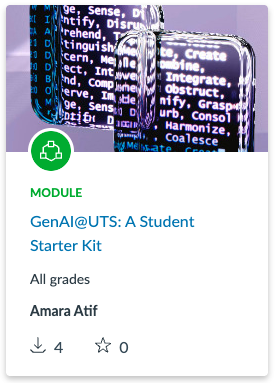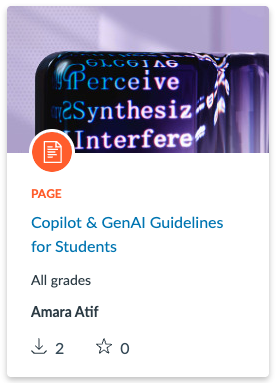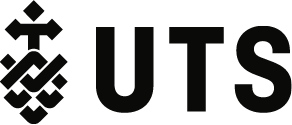Co-authored by Amara Atif, Fabian Roth (FEIT) and Delwar Hossain.
Educators in the Faculty of Engineering and IT (FEIT) have developed two new student-focused resources as part of the First and Further Year Experience (FFYE) 2025 Grant Project ‘Shaping Tomorrow’s IT Professionals: A Scaffolded Approach to GenAI Integration and Portfolios in First-Year BIS Courses’. These tools aim to scaffold students’ engagement with Generative AI (GenAI) in ways that are ethical, critical, and creative – preparing them for both academic success and the future of work.
As GenAI technologies continue to transform how we learn, create, and solve problems, we are proud to launch two new resources to help students navigate this rapidly evolving space with confidence, responsibility, and skill.
The resources are:
- GenAI@UTS: A Student Starter Kit and,
- Copilot & GenAI Guidelines for Students
These resources are designed to demystify GenAI, promote ethical and critical use, and equip students with future-focused digital capabilities. Whether you are a subject coordinator looking to support student learning, or a student keen to make the most of GenAI in your coursework, these tools are here to guide you.
GenAI@UTS: A Student Starter Kit
What is it?
GenAI@UTS is a ready-to-use Canvas module that introduces students to the ethical, critical, and creative use of GenAI in their studies. Designed to be embedded into any subject across disciplines, this resource serves as a foundational tool kit to support AI literacy and academic integrity.
Why it matters?
With GenAI tools (e.g., Copilot, ChatGPT) increasingly accessible, students need more than just technical know-how. They need the judgement and ethical awareness to use these tools effectively and appropriately. This starter kit focuses on developing that deeper understanding through short, interactive modules.
What’s covered:
This module contains six Canvas pages.
- Demystifying Generative AI. A clear and accessible introduction to what GenAI is and what isn’t.
- Critical Thinking with GenAI. Encouraging students not just to use AI, but to evaluate and question its outputs.
- The Power of Prompts. Practical guidance on how to communicate effectively with GenAI tools.
- What’s Your Part? What’s GenAI’s? A timely exploration of authorship, responsibility, and the role of human creativity.
- Technical Literacy. Insights into how tools like Microsoft Copilot work and how to use them to best effect.
- Ethical Awareness. A focus on academic integrity and responsible use of GenAI in a university context.
All materials are interactive and include H5P activities to engage students and encourage active learning.
How to find it
All UTS staff members can access Canvas Commons by going to canvas.uts.edu.au and selecting ‘Canvas Commons’ from the menu on the left hand side of the page. In the search field on this page, enter ‘GenAI@UTS: A Student Starter Kit’ to bring up the module. The tile will look like this:

Copilot & GenAI Guidelines for Students
What is it?
This concise, student-focused guide outlines how to use GenAI tools (particularly Microsoft Copilot) ethically and effectively. While GenAI offers exciting possibilities for support with writing, coding, design, and research, it also raises important questions about originality, transparency, and trust.
Why Copilot?
Microsoft Copilot powered by ChatGPT 4.0 and DALL-E, is the university-supported GenAI tool. When accessed through UTS credentials, it provides a secure, private, and equitable way for students to engage with AI technologies. This resource clarifies why enterprise access matters, and how students can benefit from it safely.
What’s covered:
- The benefits of using Microsoft Copilot over public AI tools.
- Key differences between enterprise and public versions of GenAI tools.
- Guidelines on appropriate use of GenAI in academic contexts.
- Principles of transparency and citation when using AI-generated content.
- Academic integrity rules and consequences for misuse.
This guide is especially important for students submitting assessments involving GenAI tools. It promotes the UTS commitment to honest, authentic learning while supporting innovation and creativity.
How to find it
As with the above resource, go to canvas.uts.edu.au and click on the Canvas Commons icon on the left hand side of the screen. Enter ‘Copilot & GenAI Guidelines for Students’ in the search field to find the resource. The tile below will appear on the page.

Supporting future-ready learning
These resources were developed as part of the project ‘Shaping Tomorrow’s IT Professionals: A Scaffolded Approach to GenAI Integration and Portfolios in First-Year BIS Courses’, funded through the First and Further Year Experience (FFYE) 2025 Grant under the theme Assessment in the Age of GenAI.
As part of the development process, the resources were shared with and reviewed by both students and teaching staff during interviews conducted in a first-year Bachelor of Information Systems (BIS) subject. Their feedback directly informed the structure, content, and tone ensuring the materials are relevant, student-friendly, and aligned with real classroom needs.
This initiative supports the project’s broader aim to design meaningful, scaffolded assessments that promote evaluative judgment, ethical awareness, and technical confidence in students engaging with GenAI tools. While originally developed for BIS, the resources are flexible and scalable across disciplines, supporting a whole-of-course approach to AI literacy that can be applied across disciplines.
We invite teaching staff to incorporate the GenAI@UTS module into their Canvas sites and encourage all students to explore the Copilot & GenAI Guidelines as they continue developing their skills and confidence with GenAI in learning and professional contexts.
Let’s work together to ensure that GenAI is not just used but used well at UTS.
